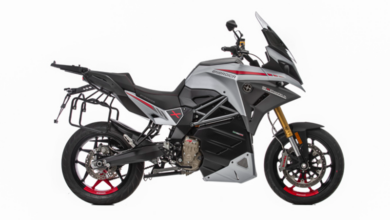Quality, intellectual theft concerns abound – July 3, 2006
While there certainly are advantages to sourcing parts, systems and entire products from China, doing business in Asia isn’t for the faint of heart.
“You have to be careful with the people you deal with,” says Emil Gomez, CEO and owner of EMGO International Ltd., based in Mableton, Ga. “Even though China has low prices and seemingly acceptable quality, a lot that’s shipped is not good quality — but it improves every year.”
EMGO produces aftermarket parts and accessories, sourcing parts from Taiwan, China, South Korea, Indonesia, Thailand and India. The company’s relationship with China now accounts for slightly less than 20 percent of products, dollar-wise, that EMGO buys.
Theft of intellectual property in China is rampant, with the Office of the U.S. Trade Representative estimating that more than 85 percent of all sales of copyrighted products sold in China last year were pirated. USTR has moved closer to filing the first-ever challenge in the World Trade Organization against intellectual piracy and counterfeiting. Other challenges that powersports manufacturers note include language barriers, bureaucracy, poor management and nearly nonexistent after-sales support.
Gomez says 90 percent of sourcing transactions are through letters of credit, and the manufacturer gets paid while the products are in transit to the United States. “By the time you get the merchandise, it’s two to four weeks later and (the manufacturer) has your money,” Gomez says. “If you have a problem, it’s your problem.” That’s why half of EMGO’s 30 employees are based in the countries where it sources parts so EMGO workers can inspect products before shipping to correct any defects before money changes hands.
CMSI Inc., Preston, Wash., employs five full-time, salaried workers as the company’s eyes and ears in the countries where it sources parts. Still, company president and CEO Tom Lynott says the challenges of doing business in China can be formidable.
“It’s very difficult to get your meaning across even with your own bilingual staff, and we’ve been doing this for a long time,” Lynott says. “And since they build to order and ship 100 percent of what’s ordered, we have to maintain millions of dollars’ worth of inventory, including parts catalogs and service manuals.” CMSI produces Twist N’ Go Scooters, SCOMADI scooters and PM Tuning Racing Products.
Because of bureaucracy, getting products through customs can be troublesome, and frequent power outages and blackouts can throw off production schedules.
Lynott also cites a poor management infrastructure and poor quality control as drawbacks of doing business in China.
Mike Tomberlin, CEO of Tomberlin Outdoor in Augusta, Ga., generally agrees with Lynott’s assessment of the market. Tomberlin adds that the quality issue extends beyond the plant where its powersports products are manufactured into the supply chain. “Any company that does business with China better be well-prepared to overcome the challenges of the supply chain,” Tomberlin says.
In the United States, the price of raw materials or components may fluctuate, but in China, quality fluctuations are common and must be dealt with. The key, Tomberlin says, is to understand the vendor base to monitor the quality of components flowing into the factory.
Tomberlin Outdoor protects its intellectual property by thoroughly vetting potential partners, knowing the principals of the company and locking in partners with long-term contracts. “At the end of the day, (the contract manufacturer) faces a significant loss of business if we walk away from the table,” Tomberlin notes.
Peter Hammond, director of Asia Pacific for Polaris Industries Inc., reiterates the importance of getting to know the people you’re working with. The company safeguards its products through tough written agreements and splitting orders among several companies so no one firm produces complete assemblies.
“You have to think seriously about what companies you’re working with,” Hammond says. “An ATV manufacturer, for example, has motivation to be your competitor.”
A company sourcing parts in China also has to consider the size of the manufacturer it wants to work with.
A larger manufacturer may be more concerned about its reputation, and, therefore, be less likely to commit flagrant IP violations, Hammond says. But dealing with a smaller manufacturer gives a customer more control.
One aspect that many American customers forget is the unintentional passing on of technology during interactions with Chinese companies. “It’s not necessarily high technology, but know-how that’s been learned through 50 years of experience,” Hammond says.
So are the risks of doing business with China worth the potential rewards? Powersports industry executives think so, but they are split over whether the opportunity for U.S. companies to source parts or products from China has passed.
“In the last three months, several friends have called me about bringing in a particular item (from China), but I have had to tell them they’re too late,” says Lynott from CMSI. “The only way it will work is if you’re willing to put in the infrastructure over there to produce products under your direct supervision.” psb

